Trumpet Mouthpiece Guide
Are you playing the perfect trumpet mouthpiece? Can you play pedal tones to triple whatevers way up high? Are you one of those talented musicians that can play on a soup can mouthpiece? Lucky you. I’m not so lucky. Finding the right trumpet mouthpiece has been a journey. Or as some call it, a “mouthpiece safari”. Kinda like Animal Kingdom, except not nearly as many people sitting next to me or as crowded.
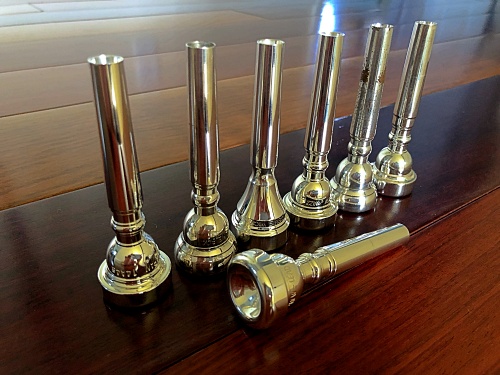
Other Mouthpieces
Jump links for you to go straight to the info
- Mouthpiece Guide
- Beginner Trumpet Mouthpieces
- Lead Trumpet Mouthpieces
- Flugelhorn Mouthpieces
- Cornet Mouthpieces
Affiliate disclosure:
We’ve partnered with WoodWind BrassWind as an affiliate. This helps to support this site. This means if you click on links on reviewed products, we may earn a small commission on your purchase from WWBW. Please note that your price does not increase because of this. We’ve purchased horns, mouthpieces, and accessories from WWBW, they are our go-to shop. Thank you in advance for supporting the band.
Why? We choose WWBW because of the following reasons:
- Product selection. WWBW has a huge selection of musical instruments, especially trumpets, cornets, and flugelhorns.
- Low price guarantee. WWBW has been in business for over 35 years. They will beat any verified price from any authorized dealer in the USA for up to 45 days after you purchase your new mouthpiece. You can call them to talk to a human at 1 800 348-5003. Here’s their page on their low price guarantee.
- Return policy. If you aren’t satisfied, you can return your purchase within 45 days for a full refund. Yes, the item must be in original, brand-new condition. (if you played the mouthpiece, there’s a $4 sanitation fee) Here’s their page on returns and exchanges.
- Customer service. WWBW specializes in woodwind and brass instruments. This is what the do. You can’t buy suntan lotion or a phone case from them. Just musical instruments. As such, you can call them and talk to a real person that knows about these mouthpieces.
- First Chair Loyalty program. You earn reward points on your purchases. For example, if your eligible purchase amount is $500, you get 2,500 point. For every 100 points you earn, that works to $1. So in the above example, those 2,500 points are worth $25 to spend. Here’s their page on their First Chair Rewards.
- 0% financing. If you need to finance your new mouthpiece, they do it with 0% interest.
Beginner Trumpet Mouthpieces
or What is a 7C Trumpet Mouthpiece ?
If you are just starting to play the trumpet, then this first section is for you. The most common trumpet mouthpiece we all started on is the 7C. The “7” refers to the rim diameter and the “C” is the cup. If the numbers don’t seem to make sense, you are right. They don’t make sense. To decode them, check out our Mouthpiece Guide first. But no worries, it’s not required to know all this right away. This mouthpiece is “Average” and “Medium” in cup volume. What? Keep reading, we’ll get to all this. The smaller cup diameter is a great place to start for younger players.
Top Pick: The Bach 7C trumpet mouthpiece
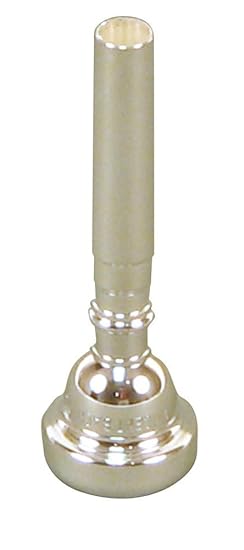
This is the mouthpiece most of us started on in elementary or middle school. I wonder if the band teacher bought them by the truckload? When we showed up for the first day of band, we were all handed one. It’s a high-quality mouthpiece that is a good compromise of quality sound volume and range. It’s 16.20 millimeter rim diameter is considered “medium wide”. For a younger player that is. Most adults find that a bit small, but everyone is different right? It’s rim shape has a well rounded edge to fit most players. This means the inner rim edge is rounded so your lips (embouchure) can move as you develop your range. It’s far and away the most widely used trumpet mouthpiece model. It’s also not just for beginners. Many players have played this for years and even professionally.
Here is the Vincent Bach Trumpet Mouthpiece Chart.
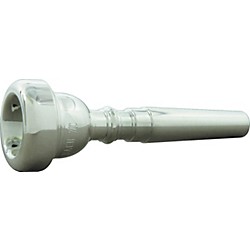
If you aren’t sure, just starting out, or would like to try different options, Blessing makes a 7C Trumpet mouthpiece at a fraction of the price of the name brand Bach. It is silver plated too.

If you are older than elementary/middle school age or have fuller lips, a 1 1/2C may be a better fit. It has a larger rim diameter at 17.00 millimeters and more room in the cup. Check out the Yamaha Shew Jazz YouTube below where a 1 1/2 C is shown and compared to that lead trumpet mouthpiece. It will provide a deeper tone than the 7C.
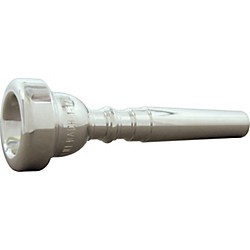
If you find the 7C trumpet mouthpiece a little too big for you, or you have thinner lips, consider the 10 1/2C. It has a slightly smaller rim diameter of 15.90 millimeters than the 7C and a medium cup. It will provide a brighter tone than the 7C does. Some find this smaller mouthpiece helps their upper register as their embouchure continues to develop.
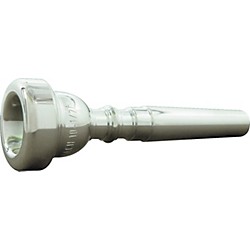
Best Lead Trumpet Mouthpieces
As an advanced player or one that wants to continue improving, you may benefit from changes to your mouthpiece. Before you look at a lead mouthpiece, please read through the post on How to play high notes on trumpet. The jump link will take you directly to the mouthpiece section. It’ll walk you through the differences.
Back already? Okay, check out Yamaha’s perspective on “Throats and Backbores“. I’ll still be here. Where else would I go?
Okay, you get now how lead trumpet mouthpieces are designed to accommodate the higher volume of air and increased demands of lead trumpet playing. We are not all gifted upper register artists. You know, those talented people that can play from peddle tones to double whatevers on soup cans. A lead mouthpiece can help you play higher notes with better control and intonation. They might even help you add a note or too higher. What they won’t do is magically transform you into a gifted screamer. And these aren’t cheap so make as an informed choice as possible. We’ve purchased these and did side by side comparisons and posted them on our YouTube channel .
Many of us tried “Lead” mouthpieces when we wanted to improve our range for jazz and marching band. Please, talk to your teacher about this. You want to make sure the mouthpiece you have is holding you back. If you want a more detailed view on playing high notes on the trumpet, go back and read the whole post on What’s the range of the trumpet. How to play high notes.. Hit the back button when you are done. I’ll wait here.
New Addition: Yamaha Allen Vizzutti
We just purchased a Yamaha Allen Vizzuti trumpet mouthpiece. Yamaha’s site says it has a rim contour that is “semi flat”. Thought this may be interesting to those of us who are used to Schilke mouthpieces that have a pretty flat rim. It has the same throat as the Bobby Shew Lead below. In looking at the Allen Vizzutti, the rim shape doesn’t appear that different than the Bobby Shew Lead. In playing it, it felt a little flatter. The inner rim diameter is 16.67 mm. This is roughly between the Bobby Shew Lead and the Bobby Shew Jazz. I played it a few times over the last week and I seem to like it better than the Bobby Shew Lead. But that’s just my personal tastes. We’re going to post a Youtube video on that soon. For now, here’s a picture of it on my kitchen counter.
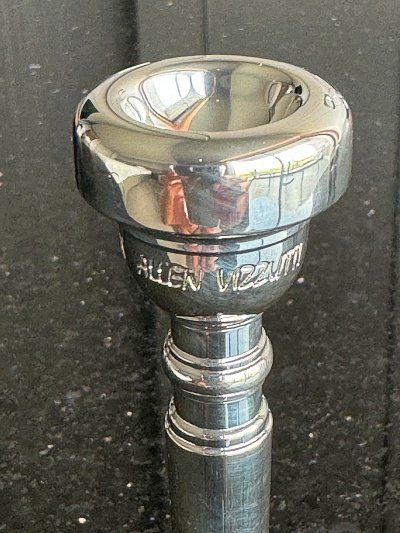
Top Pick: Yamaha Bobby Shew Lead.
This is a Signature Series mouthpiece designed by legendary trumpet player Bobby Shew working with Yamaha. Yamaha says this is modeled after their 14A4a (see below for the full review and YouTube comparison). The Rim diameter is a little smaller than the Schilke and it’s companion, the Bobby Shew Jazz. The rim/cup diameter is 16.54 millimeters and slightly larger than the Denis Wick model below. It has a very shallow cup, pretty much feels the same as the Schilke 14A4A cup. The back bore is tight which gives a bit of resistance to support your upper register. The rim shape is considered Semi-thick with a Semi-round contour. You’ll notice the outer and inner rim are more rounded than the Schilke 14A4A. Some players like this as your lips can move more easily with the more rounded inner rim contour. The throat is 3.56 millimeters wide. The throat and backbore are slightly more open than the Schilke 14A4A (watch the YouTube and decide for yourself). This mouthpiece is a favorite of many lead players using it for their professional trumpet playing duties. Here’s a side by side review of the Bobby Shew Lead and compared to the Schilke 14A4A.
Here is the Yamaha USA Trumpet Mouthpiece Comparison Guide.

Yamaha Bobby Shew – Jazz
Many players that use the Bobby Shew Lead also have the Bobby Shew Jazz in their bag. You’d expect them to be pretty much the same right? Let’s look. The differences are:
- RIm Diameter: 16.85 millimeters verses 16.54 millimeters. Slightly bigger.
- Throat: 3.65 millimeters verses 3.56 millimeters. Slightly more open.
- Backbore: Standard verses Narrow. More open. Yamaha specific descriptions.
- Cup: Standard versus Very Shallow. Yamaha specific descriptions.
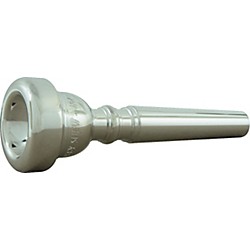
Given all those differences, they feel very different from each other. You can expect a much warmer, richer sound from the Jazz version verses the Lead. It’ll also have less resistance with the larger throat and wider backbore. In playing both, the Shew Lead is much brighter as you’d expect with the shallower cup. The Shrew Jazz is much warmer, richer in sound. It very much plays like a 1 1/2C and you can put more behind it because of the larger throat size. See the YouTube below for a side by side comparison of the Bobby Shew Jazz and the Lead trumpet mouthpieces. For comparisons sake, a 1 1/2 C is also shown.
Denis Wick 4E. This is an excellent high register mouthpiece. It’s Rim diameter is 16.50 mm. It also has their shallowest cup described as “Very Shallow”. Like the mouthpieces above (except for the Bobby Shew Jazz), the shallow up provides a bright, crisp sound. The V-type back bore is a signature of Denis Wick designs. This helps you deliver a more focused sound. Check out the video below where we unbox and compare it to the Bobby Shew Lead mouthpiece. The backbore is 3.7 millimeters which is the largest of the Lead mouthpieces we recommend. The larger throat and the V backbore make for a very free blowing mouthpiece. The rim width is 5.18 millimeters which is middle width for these mouthpieces. It’s very similar in the flatness of the Schilke “4” rim contour for comfort and endurance. It plays like the Schilke 14A4A with a more open feel. The “squareness” of the outer rim contour is very comfortable and spreads the weight of the mouthpiece nicely on your lower lip. We like it for jazz group for the depth of sound and upper register playability.
Here is the Denis Wick Mouthpiece Guide.
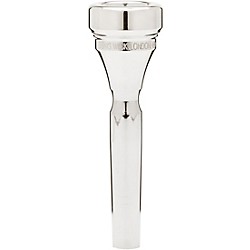
Schilke 14A4A. This Schilke trumpet mouthpiece has been around for decades and is a proven performer. See above for a review and comparison with the Bobby Shew Lead. Below, there’s a side by side with the Yamaha 14A4a and the Shrew Lead. Most every manufacturer produces a mouthpiece similar to this one. The Rim diameter is medium large (17.09mm) and a shallow “A” cup. To me, 17.09 feels large. but that’s my face. The “4” means the rim is “semi-flat”. It feels fairly broad and the outer rim isn’t as rounded as some which offers a bit better seal if you need that. Some players like the little wider, flatter rim as it provides a nice cushion for longer playing sessions. Because of course we don’t use much mouthpiece pressure right? The last “A” is a “tight” back bore (per Schilke) which will support you with just the right amount of resistance. The larger rim diameter and very shallow cup allow for a greater volume and high note performance. The outer and inner rims aren’t as rounded as the Yamaha 14A4a or Yamaha Bobby Shew Lead. See the Yamaha 14A4a comparison with an old version (like 4 decades old) with this and the Bobby Shew Lead. Please check back as a side by side with a new one is coming.
Here is the Schilke Mouthpiece Guide. The trumpet sections are sprinkled throughout the guide.
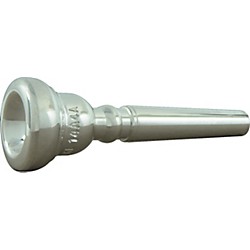
Yamaha 14A4a
This is (I think. okay, I guess) modeled after the Schilke 14A4A . Did you jump down here from the top or go through everything? Anyway, It has a rim diameter of 16.68 millimeters. The very shallow cup, tight throat and backbore are designed for lead players. Where it differs is the slightly rounded inner and outer rim verses the Schilke 14A4A (which is 17.09 millimeters). It has a 3.65 millimeter throat which is the same as the Bobby Shew Jazz. It feels a little freer than the Schilke 14A4A and the Bobby Shew Lead (3.56 millimeter throat. It’s “only” 0.09 milliliters smaller, but I did feel a difference). And it does. It feels (this is neither good nor bad judgement), different. The combination with your trumpet will make a difference in tone too. It has a more rounded outer rim than the Schilke 14A4A and the inner rim shape feels pretty similar. It feels very similar to the Yamaha Bobby Shew Lead mouthpiece. This makes sense as a lot of the specs are very similar. The Bobby Shew Lead feels a bit more supportive with the slightly smaller throat.

Mouthpiece Case
Over time you may find yourself with more than one mouthpiece. Keeping them protected from each other and more importantly, from dinging your horn is a must. This tough nylon case has soft, individual pockets to hold your mouthpieces from damaging each other. It has a zippered outer pocket too. This Protec case has soft sleeves for 4 mouthpieces. I purchased one (not sponsored) and here’s a quick review:
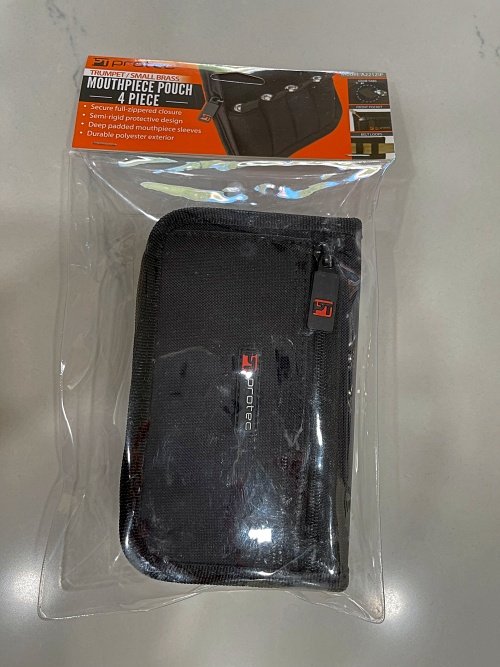
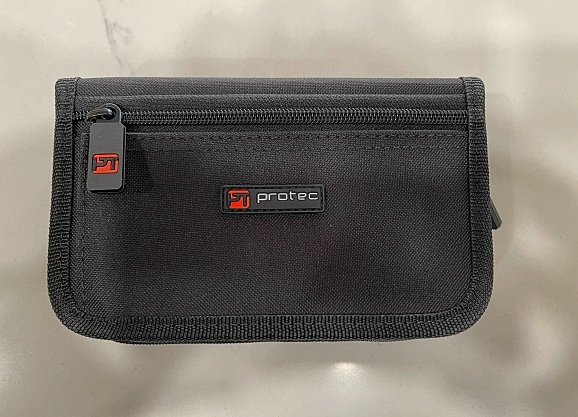
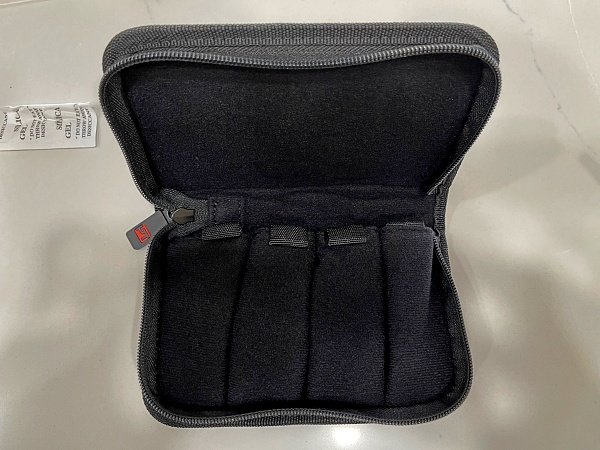
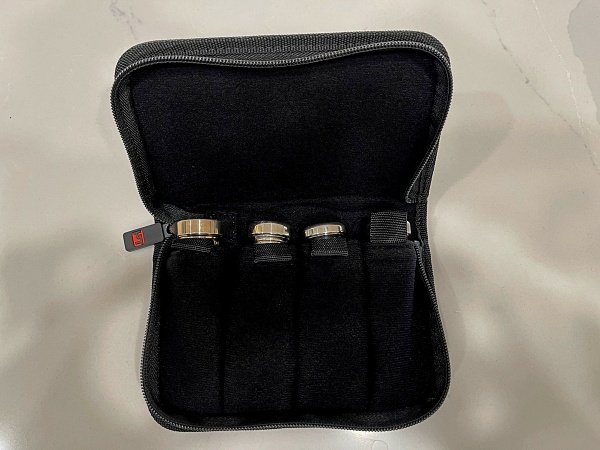
My only negative thing to say is that it’s a bit bigger than say each mouthpiece in the box they came in. That said, they definitely protect them as good or better than a cardboard box.

Thanks for playing along !

